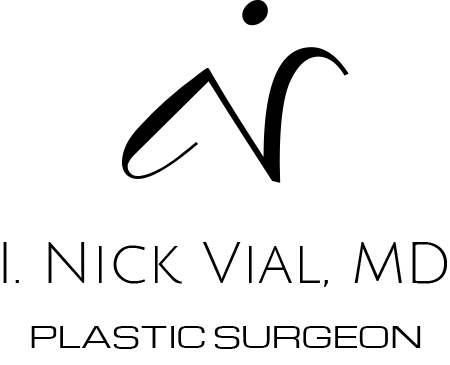- No longer desire implants
- Have hardened implants (capsular contracture)
- Have leaking implants
- Have distortion of the breast from years of having implants
- Have BIAI (Breast implant associated illness)
Implant removal can be performed for a number of reasons. Patients may:
Should I get a
capsulectomy?
Implant removal in Bend Oregon is a good idea for healthy patients who no longer want their implants or want to replace their implants.
Capsulectomy is a medical procedure for patients experiencing clinically significant capsular contracture. In Grade I and II capsular contracture, your breasts might feel a little firm, but look normal. In Grades III and IV capsular contracture, your breasts look abnormal and feel firm; they may even start to hurt. Hardening of the implants with distortion and pain is a clear indication that something is wrong, and you should consider capsulectomy to remove the implant.

Who is a candidate for implant removal?
In general, candidates for implant removal:
- Are in good physical and mental health
- Do not have underlying medical conditions that preclude surgery
- Have an up-to-date mammogram if over 30 years old
- Are non-smokers or are willing to stop smoking one month before and one month after the procedure
- Do not use nicotine products, or are willing to stop using products one month before and one month after the procedure (gum, chews, patch, vape)
- Are not exposed to second-hand smoke
- Have realistic expectations from the surgery
What are the types of implant removal?
When implants are removed, patients may have extra skin. Excess skin can be managed with a breast lift, implant replacement, fat grafting, or a combination of these procedures.
If there is scar around the implant you may be a candidate for capsulectomy. There are different types of implant removal in Bend Oregon:
- “En bloc” capsulectomy,” is a surgical procedure in which a breast implant is removed along with a rim of normal tissue. This is a unique operation done for patients with Breast Implant-Associated Anaplastic Large Cell Lymphoma (BIA – ALCL). BIAI is a clinical diagnosis and is often difficult to make. Removing implants may or may not improve symptoms of BIAI.
- Complete Capsulectomy is removal of the implant and capsule without removal of normal tissue. This is an operation used to treat patients with significant scarring around the implant.
Should I get new implants?
Whether or not you should get new implants to replace the older ones depends on your specific goals and desires. After a capsulectomy procedure, women often replace implants. However, BIAI patients should note that all implants have a silicone shell, including saline implants.
What are my other breast restoration options after implant removal?
Breast Lift
A breast lift is a cosmetic procedure in which implant removal in Bend Oregon is not necessary, but in which a sagging breast is re-oriented to make it sit upright on the chest wall. If your nipples are pointing downwards, they can be returned to a youthful position. This procedure doesn’t increase breast size, but it can improve the breast profile and overall appearance.
Fat Grafting
Fat grafting is a procedure in which fat is harvested from other parts of the body, such as the thighs, buttocks, and flanks, via liposuction. After purification, the fat tissues are injected into the breast to augment the breast size. However, this procedure is only suitable if you have sufficient fat tissues in other parts of the body.
What happens during
implant removal procedure?
Your implant removal journey starts with a consultation with Dr. Vial. He carefully assesses your condition, discusses your goals, and creates a surgical plan. The appropriate removal technique will be based on your breast implant condition and goals. Some implant removal can be done under local anesthesia, but most are done under general anesthesia. The day of surgery, Dr. Vial marks your breasts and reverifies the planned scars with you. Once you are under anesthesia, Dr. Vial starts the implant removal in Bend Oregon procedure. He might use the same scar from your previous surgery, or, in some cases, he may make a new scar or lengthen existing scars. If you desire another breast implant or a breast lift this can be done at the same time or in a staged fashion.

What is the recovery process after implant removal?
How you recover in the three months after your surgery determines the outcome for years to come. Dr. Vial will provide a list of step-by-step recovery guidelines after your surgery. After implant removal, your breasts will be wrapped with an ace wrap. Forty-eight hours after surgery you can remove the wrap. Usually, no bra is required unless directed otherwise. The swelling and bruising will gradually dissipate after 1-2 weeks, and you can resume most light activities in 4 weeks. The scars will initially look red and bright, but they’ll gradually fade to white over a 1-to-2-year period.
What are the risks of implant removal?
Dr. Vial places the utmost importance on your safety. He only works with board-certified anesthesiologists and certified nurses to minimize the risk of side effects or complications. However, all surgeries carry inherent risks, including implant removal. Dr. Vial will highlight the potential risks of a implant removal in Bend Oregon during your consultation.
The complications unique to implant removal that are reported nationally include but are not limited to:
- Change or loss of nipple sensation
- Breast asymmetry
Why choose Dr. Vial for implant removal?
Dr. Vial is a board-certified plastic surgeon with extensive training and experience in implant removal. He has trained at the world’s best institutions where many of these procedures continue to be advanced. He makes safety a top priority and has developed a reputation for beautiful, natural results.

